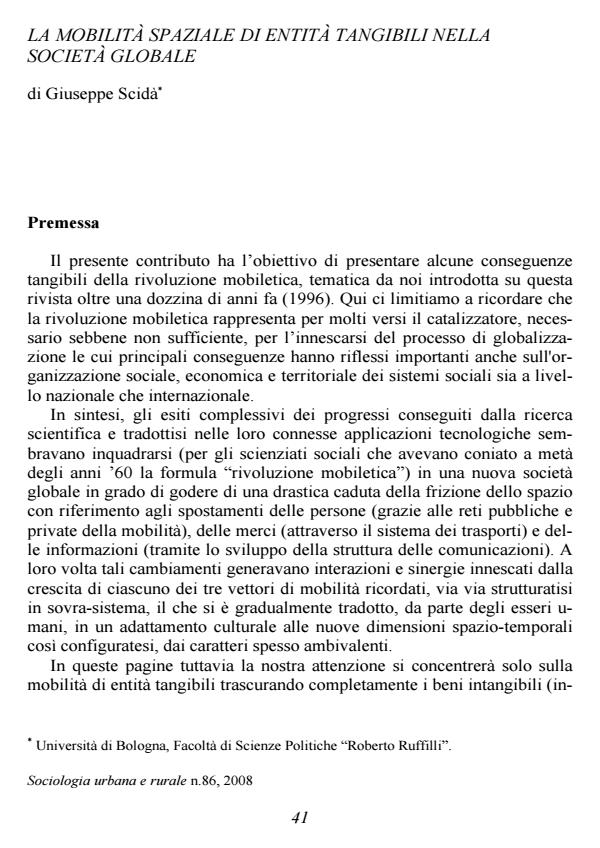La mobilità spaziale di entità tangibili nella società globale
Journal title SOCIOLOGIA URBANA E RURALE
Author/s Giuseppe Scidà
Publishing Year 2009 Issue 2008/86
Language Italian Pages 24 P. 41-64 File size 199 KB
DOI 10.3280/SUR2008-086003
DOI is like a bar code for intellectual property: to have more infomation
click here
Below, you can see the article first page
If you want to buy this article in PDF format, you can do it, following the instructions to buy download credits

FrancoAngeli is member of Publishers International Linking Association, Inc (PILA), a not-for-profit association which run the CrossRef service enabling links to and from online scholarly content.
La mobilità spaziale di entità tangibili nella società globale - The spatial mobility of tangible entities in a global society, The paper handles some tangible consequences of the mobiletic revolution, as a necessary but not exhaustive catalyst of the evolutionary process of globalization whose effects have deep repercussions on the social, economic and territorial organization of the social system both at a national and an international level. For the social scientists coining the formula "mobiletic revolution" by the middle of the Sixties, the overall results seem to be expressed by a new global society benefiting a sharp drop of space friction. Today, the related consequences of it find their evidence in the people, goods and information mobility, respectively through public and private networks, through the transport system and finally through the communication structure development. In turn, such changes produce a number of interactions and synergies caused by the growth of each of the three mobility carriers, which gradually brought the human beings to an ambiguous cultural adjustment as regards the new shaped space-time dimensions. Key words: mobiletic revolution, social change, social relations, mobility carriers.
Giuseppe Scidà, La mobilità spaziale di entità tangibili nella società globale in "SOCIOLOGIA URBANA E RURALE" 86/2008, pp 41-64, DOI: 10.3280/SUR2008-086003